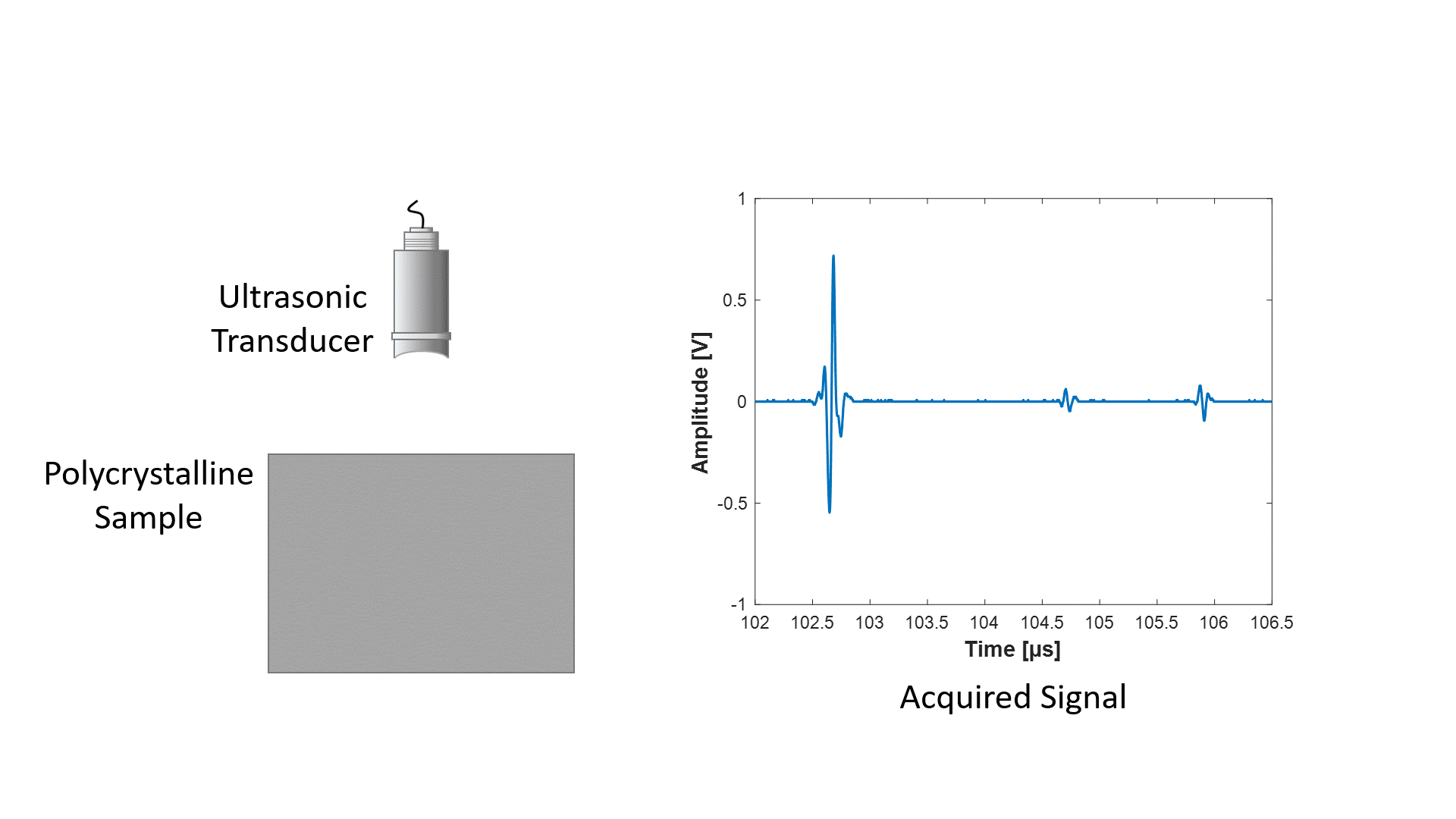Ultrasonic NDE
Ultrasound refers a sound wave having a frequency of beyond 20000 Hz. Just like normal speech sounds echo is also noticed in case of ultrasound. Using the echo of the ultrasound different information about the body under investigation (materials, ceramics, biomaterials etc) can be obtained. It is one of the most popular non-destructive methods.
Ultrasound is used widely in various industries for detection and identification of defects in polycrystalline materials. My research interest lies in quantifying polycrystalline materials through ultrasound. Using an ultrasonic transducer ultrasonic signal can be transmitted and received. When ultrasound travels inside a polycrystalline material it scatters in all direction. From the reflected signal of the wave information about the microstructure of the material can be quantified. Some of the main properties of ultrasound is phase velocity, attenuation and backscatter. Using these properties of ultrasound the microstructural properties of a material can be predicted.
Ultrasonic wave scatters when it passes through the grains of polycrystalline materials. Grain boundaries are the main sources of ultrasonic scattering and attenuation. Ultrasonics theories like Weaver’s model is specially helpful for understanding ultrasonic responses in polycrystalline materials. Norouzian and Turner developed the modifications necessary to apply ultrasonic theories to calculate phase velocity and attenuation using the discrete synthetic microstructures for cubic polycrystalline materials.
My research work aims to further this approach of developing and testing the ultrasonic theories applicable to discrete synthetic microstructures for complex polycrystalline materials. The animation in this page is my lazy approach towards describing the ultrasonic properties. However, Iowa State University has built a great website regarding all the NDT techniques. I would highly encourage interested readers to go through different sections in their website.

